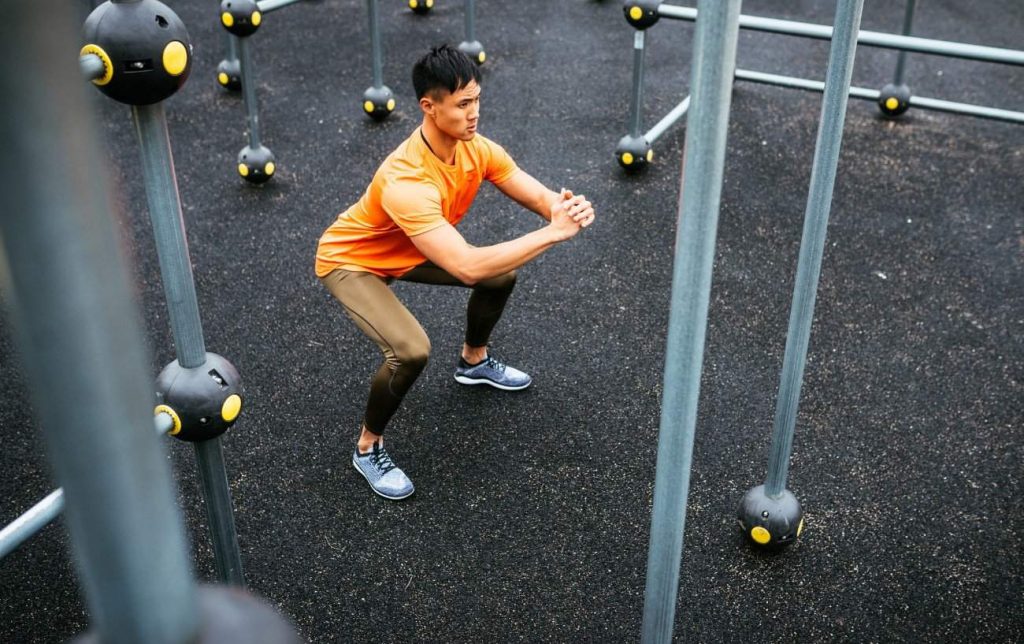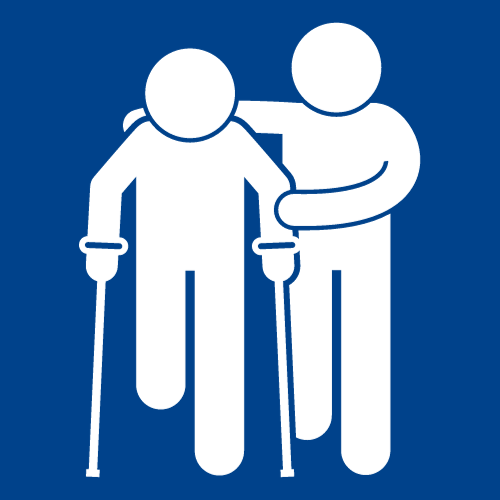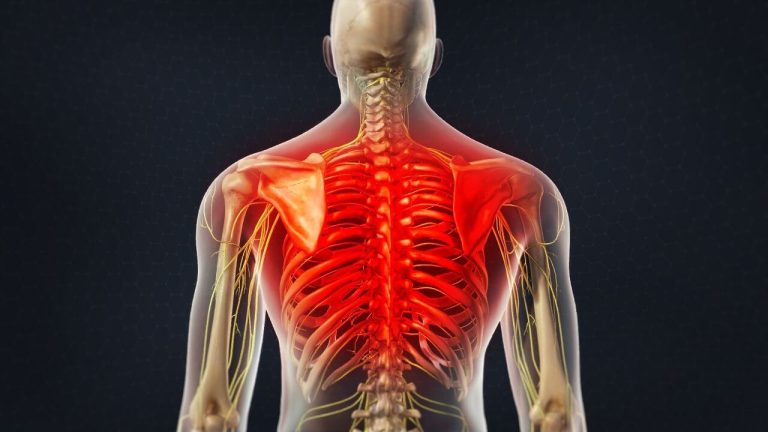Cross training, or cross conditioning, refers to combining multiple types of physical exercise and activities in a training regimen. It involves training in two or more sports or types of exercise to improve overall performance, fitness, and health.
Cross training provides variety, reduces the risk of injury, and works different parts of the body for well-rounded physical development.
Why cross train?
There are several key reasons to incorporate cross training into your fitness routine:
Prevents Overuse Injuries: Focusing on just one activity can place repetitive stress on the same muscles and joints, leading to tissue damage and overuse injuries like runner’s knee or tennis elbow. Cross training varies movements and impacts to give worn areas a break.
Enhances Overall Fitness: Any single activity only works limited muscles and energy systems. Cross training hits all aspects: aerobic capacity, strength training, flexibility, balance, agility, etc.
Improves Performance: Challenging the body with new stimuli enhances capabilities and physical skills that translate to better performance in your main sport.
Fights Boredom: Varying your workouts keeps exercise fun, interesting and mentally stimulating, making you less likely to lose motivation.
Aids Recovery: Active recovery activities like easy cycling, swimming and yoga help flush waste products out of stressed tissues between demanding workouts.
Facilitates Rehabilitation: Cross training keeps you fit if you’re injured by choosing substitute activities that don’t aggravate damaged tissues.
Types of Exercises in Cross Training
An effective cross training program incorporates workouts focused on different fitness components. Main types include:
Aerobic Exercise: Rhythmic exercises like running, swimming and dancing performed at moderate intensity for extended periods. Improves cardiovascular endurance.
Anaerobic Exercise: brief, high-intensity bursts of work like sprints, plyometrics, and resistance training. Builds speed and power.
Strength Training: Lifting weights, resistance bands, bodyweight exercises. Increases muscle size and strength.
Core Training: Focuses on abs and back muscles. Examples: Pilates, stability ball exercises. Improves balance and stability.
Flexibility Exercise: Stretching, yoga, foam rolling. Enhances range of motion and reduces injury risk.
Developing a Cross Training Program
How you structure your cross training depends on your goals. Mixing up activities randomly works for general fitness. But more targeted plans suit competitive athletes. Here are some tips:
Identify Your Primary Sport: This anchors your program. Arrange other workouts to support performance in this activity.
Pick Supplementary Exercises: Choose modalities that reinforce desired abilities. A soccer player might cross train with sprints, lateral shuffles and agility drills. A swimmer could focus more on resistance and flexibility training.
Allow for Recovery: Hard training days should alternate with easier ones to prevent burnout and overtraining.
Emphasize Weaknesses: Use cross training to bring up lagging areas related to your main sport. For example, a cyclist could concentrate more on upper body conditioning.
Consider Access and Enjoyment: Pick accessible, affordable and fun activities you’re likely to stick with. No use choosing water polo if the nearest pool is 50 miles away.
Change It Up: Vary cross training selections every 4-6 weeks to prevent adaptation. Switching the stimulus keeps the body responding.
Maintain Proper Technique: Learn correct form for every exercise to maximize benefits and avoid injury. Poor technique undermines effectiveness.
Sports for cross training
Almost any combination of sports and activities provides cross training benefits. Popular options include:
Running
It boosts aerobic power, leg strength, and endurance. Cross train with cycling, swimming, rowing, and elliptical.
Cycling
Improves cardiovascular fitness. Alternate with running, jogging, skiing, water workouts.
Swimming
Full-body exercise without impact stress. Combine with running, martial arts, dance, weights.
Rowing
Hits cardio, legs and upper body. Switch up with cycling, yoga, Pilates, aerobics.
Strength Training
Use free weights, resistance bands, medicine balls, bodyweight exercises. Supplement with plyometrics and agility drills.
Yoga
Increases flexibility, balance and core strength. Alternate with squash, dance, competitive sports.
Racquet Sports
Tennis, badminton, squash. Stress different movement patterns than running and cycling.
Martial Arts
Karate, boxing, kickboxing. Develop coordination and mental discipline. Use as active recovery from heavy lifting.
Dance
Jazz, hip-hop, ballroom, and Zumba. A fun way to cross train. It combines endurance, coordination, flexibility, and balance.
Mixing activities into a cross training program keeps workouts challenging. But taking up completely new sports also provides mental breaks and unlocks new motor patterns and physical capabilities that transfer back to enhance performance in your central sport.
Cross training for Athletes
Elite and competitive athletes can really leverage targeted, strategic cross training tailored to their individual sport’s needs and demands.
Cross training for Runners
Prevents repetitive strain to muscles and joints. Options like swimming, cycling, rowing, elliptic maintain aerobic conditioning while giving legs a break. Also focus on building core and upper body strength to support running performance.
Cross-training for Cyclists
Relieves saddle pressure. Activities like Nordic skiing and indoor rowing mimic cycling motions. Include weight training to correct muscle imbalances from hunched position. Stretch hip flexors and strengthen core.
Cross-training for Swimmers
Reduces shoulder overuse and strain. Supplementary exercises like Pilates, resistance training, and yoga build core and upper body strength, enhance kinesthetic awareness.
Cross-training for Triathletes
Already cross train by the multi-sport nature. But still benefit from added disciplines like basketball, trail running, soccer that develop power and lateral quickness. Prevents boredom during long periods of triathlon-specific prep.
Cross-Training for Soccer Players
Prevents excessive runs. Alternate technical drills with cycling, basketball, swimming for variety. Build leg and core stability with unilateral exercises, medicine balls. Develop whole body strength in the weight room.
Sample Pro Athlete Cross Training Programs
LeBron James: Basketball superstar focuses on weight training, swimming, cycling for variety, active recovery. Maintains cardio, builds strength to enhance prolific dunking, rebounding and driving to the hoop.
Tom Brady, an NFL quarterback, does resistance training for power and injury prevention. Uses pliability exercises like deep tissue work and resistance bands to keep muscles long and flexible for throwing. Also cycles and runs.
Simone Biles: Gymnast legend build strength and balance with activities like indoor climbing, slacklining, surfing and calisthenics. Maintains flexibility through stretching, massage therapy and restorative yoga.
Katie Ledecky: The world’s top female swimmer trains in the pool up to 70 km per week. Cross train with yoga, cycling, running, and weights. Emphasizes core strength, shoulder stability, and mental breaks from the monotony of endless laps.

Cross training while injured
Cross training is a valuable way to maintain overall fitness when you cannot perform your regular training due to injury or post-surgery recovery. Low- or no-impact activities allow you to avoid overstressing damaged, healing tissues.
Benefits of Cross Training While Injured
- Maintains cardiovascular conditioning if your sport is running, cycling etc. Important because aerobic fitness starts declining after just 7-14 days off.
- Prevents loss of supporting muscle strength and flexibility during long layoffs. Helps expedite return to full activity later.
- Provides psychological boost and prevents negative feelings associated with being forced to rest.
- Helps reconnect mind and body which can become “de-trained” to specific motor patterns after extended time away.
- Speeds recovery by enhancing blood flow to affected areas.
Choosing the Right Injury Substitute Activities
- Consult your doctor, physical therapist or athletic trainer to identify exercises appropriate for your particular injury type and stage of rehab. Get customized advice.
- Focus on low or non-impact activities like swimming, elliptical machine, stationary cycling to limit stress on healing areas during bone, ligament, tendon injuries.
- Avoid weight-bearing workouts if recovering from lower body injuries. Maintain fitness with hand cycling, deep water running.
- Let pain be your guide. Stop if movements aggravate the injury site. Cross train at an easy intensity with a pain-free activity.
- Pay attention to technique—inefficient, poor form with substitutions risks other injuries. Go slow while learning proper mechanics.
- Use alternative training as a bridge to keep conditioning until you can perform your regular sports movements again.
Example: Injury Substitution Exercises
Common Training Injury: Runner’s knee or patellar tendinitis
Cross Training Options: Swimming, deep water running, elliptical machine
Injured Area: Lower back strain
Cross Training Ideas: Recumbent stationary bike, upper body ergometer
Affected Region: Sprained ankle
Cross Training Activities: Seated rowing machine, strength training upper body
Injured Tissue: Torn rotator cuff
Cross Training Selection: Walking, running in chest-deep water, legs only spin cycling
Proper cross training works different components of fitness to drive adaptation towards new goals and prevent overuse issues. It serves both recreational enthusiasts and elite competitors looking to enhance performance or recover from injuries.
Combining complementary exercises into a program checks more training boxes because no single activity strengthens all aspects equally at once. The balanced approach provides a asymmetrical training stimulus so key physical qualities develop in harmony, not randomly.






